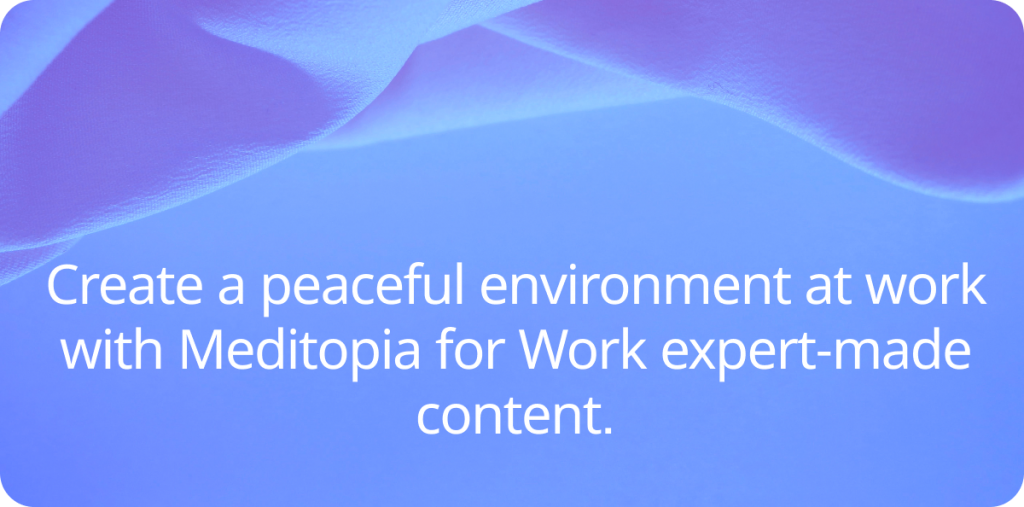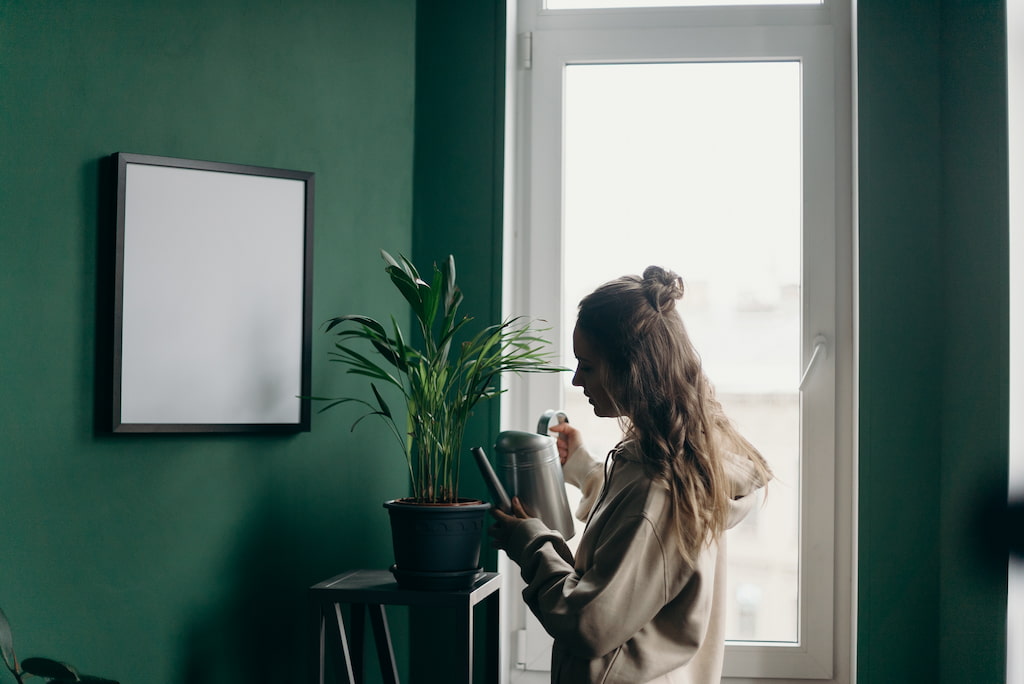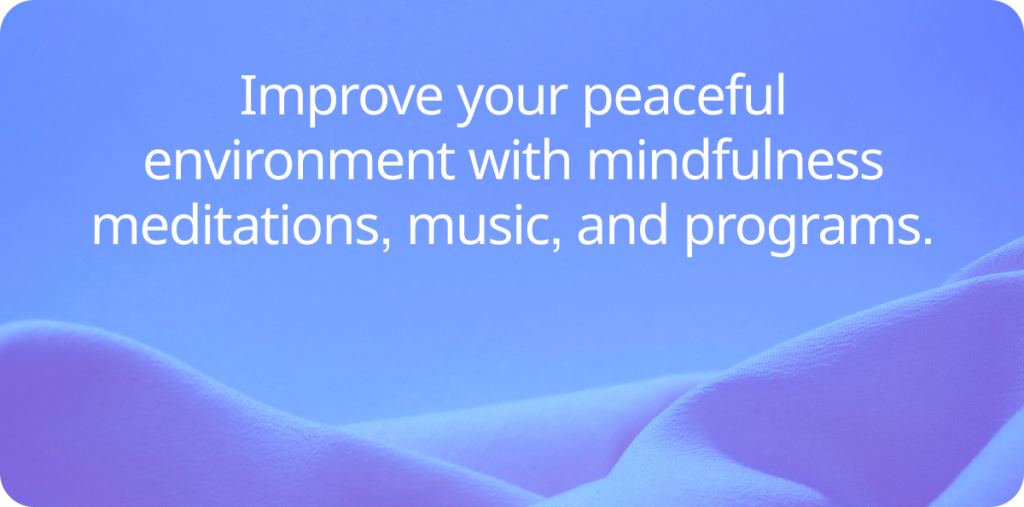How to Create a Calm Environment

Table of contents
Do you get out of work craving for a peaceful environment? Have you ever wondered how to find inner peace? If so, welcome! You will discover how to create a calm environment to support your mental well-being.
Join us as we delve into practical tips and strategies to help you foster a more peaceful environment and unlock the many benefits it brings to your mental and emotional state.

Benefits of Creating a Peaceful Environment
Having a peaceful home, office, or room has many benefits for our mental and physical health. Think of it as a sanctuary, where your only task is to be at ease and enjoy your free time. These are some of the benefits:
Mental Health Boost
Creating a peaceful environment can significantly contribute to your emotional well-being. It provides a safe space where you can unwind, find solace, and nurture your mental state. This serene space can help stabilize your emotions, reduce symptoms of anxiety and depression, and foster an overall sense of well-being.
Stress and Anxiety Reduction
It creates a haven where the relentless demands of life can be momentarily set aside. By immersing yourself in tranquility, you can effectively lower stress levels and alleviate anxiety. Understanding the physiological and psychological mechanisms at play will shed light on how your environment can become a source of calm amidst the storm.
Enhanced Focus and Productivity
Many of us struggle to maintain our focus and productivity amid the distractions and clutter of our surroundings. Here, a peaceful environment steps in as a game-changer. It’s a space meticulously designed to minimize distractions and promote concentration.
Cultivation of Creativity
Creativity flourishes in an atmosphere of peace and serenity. Discover the intriguing connection between a peaceful environment and creative thinking. Whether you’re an artist, a writer, or simply seeking to infuse creativity into your daily life, you’ll find inspiration in understanding how your surroundings can be tailored to nurture your inventive spirit.

Inner Peace Meaning
Before moving on with how to create a calm environment, it’s important to define “inner peace.” It’s what you are looking for, but what does it look like? Where can you find it? Well, we wished it could be bought in stores, but the truth is inner peace is a state of mind.
It’s characterized by a sense of calmness, contentment, and harmony within oneself. It involves a profound sense of balance, where external stressors and internal conflicts have been managed or resolved, leading to a serene and centered state of mind.
Inner peace feels and looks different for everyone. For some, it can be the tranquility of an empty room, while for others, it is being surrounded by people.
You can achieve inner peace in different contexts. If what you are looking for is a peaceful home, you should ask yourself how to find inner peace according to what evokes this feeling in your house. Read the following lines to get started.

Assessing Your Current Environment
Before embarking on the journey to create a peaceful environment, it’s essential to take stock of your current living or workspace. By evaluating your surroundings, you can gain valuable insights into what needs improvement and how to tailor your environment for enhanced mental well-being.
Take a look around
The first step is to pause and reflect on the space you currently inhabit. Whether it’s your home, your office, or any other area where you spend a significant portion of your time, consider how this environment makes you feel. Is it a place that promotes tranquility and calmness, or does it contribute to stress and restlessness? Take a moment to mentally survey your surroundings, or grab a notepad and jot down your observations.
Identify common stressors and distractions
Are there cluttered and disorganized areas that trigger feelings of unease? Do you find that the room is consistently too noisy or eerily quiet, causing discomfort? Are there elements in your surroundings that serve as constant reminders of pending tasks or unresolved issues?
By recognizing and documenting these stressors, you’ll have a clearer understanding of the specific areas that require attention and modification.
This initial assessment serves as the foundation for the transformative journey of creating a peaceful environment. It empowers you to identify the factors hindering your mental well-being and paves the way for making intentional changes that align with your goal of inner peace.

How to Create a Calm Environment – Practical Tips
Now that you’ve assessed your current environment and identified areas that may be causing stress or distractions, it’s time to roll up your sleeves and start crafting your haven of tranquility. Here are practical tips to guide you in creating a peaceful environment that fosters improved mental well-being:
Decluttering and organization strategies
Begin your transformation by decluttering your space. Clutter not only occupies physical space but can also clutter your mind. Embrace organization strategies such as sorting items, prioritizing what you truly need, and finding creative storage solutions. As you declutter, you’ll experience a sense of lightness and orderliness that can positively impact your mental state.
Choosing calming colors and decoration
A secret many underestimate about how to create a calm environment: The impact of colors on our emotions. Opt for calming color schemes like soft blues, muted greens, or earthy tones. Incorporate decor elements such as soothing artwork, cozy textiles, and minimalistic designs. These choices can create a visually calming atmosphere that promotes relaxation.
Incorporating nature elements
Nature has a natural calming effect. Introduce elements of nature into your environment, such as houseplants, natural wood furnishings, or nature-inspired decor. The presence of greenery and natural textures can connect you with the serenity of the outdoors, even indoors.
Setting up a designated relaxation space
Designate a specific area within your environment for relaxation and rejuvenation. Whether it’s a cozy reading nook, a meditation corner, or a comfortable chair with a view, having a dedicated relaxation space can serve as a retreat where you can unwind and recharge.
Managing noise and lighting
Pay attention to the auditory and visual aspects of your environment. Consider using noise-canceling headphones or white noise to minimize unwanted sounds (we have plenty of colored noises in the app!). Additionally, adjust your lighting to create a soothing ambiance. Soft, warm lighting can induce relaxation, while natural light during the day can uplift your mood.
Overcoming Challenges and Obstacles
Everything so far sounds good and achievable, right? But it’s also true that you may encounter a few hurdles along the way. Don’t be discouraged; these challenges are a natural part of the process. Here are some strategies to overcome common obstacles:
- Dealing with limited space or resources: Not everyone has the luxury of a spacious home or an extensive budget for decor. Embrace minimalism, choose multifunctional furniture, and make use of vertical storage solutions. A peaceful environment is about simplicity and intentionality, not size or extravagance.
- Managing the influence of external factors: Sometimes, external factors like noisy neighbors or street traffic can disrupt your peaceful environment. Consider noise-canceling headphones, soundproofing measures, and practicing mindfulness techniques can help you remain centered amidst external chaos.
- Addressing resistance from others in shared spaces: If you share your living or working space with others who may not fully embrace your quest for a peaceful environment, open communication is key. Talk to your cohabitants or colleagues about your goals and the benefits of a serene space. By involving others in the process, you can work together to create a harmonious environment that accommodates everyone’s needs.
Remember that obstacles are opportunities for growth and adaptation. By creatively addressing these challenges, you’ll be better equipped to create and maintain a peaceful environment that positively impacts your mental well-being, even in less-than-ideal circumstances.
Final Thoughts
Your mental well-being is a precious asset, and a peaceful environment acts as a steadfast ally in nurturing it. It’s more than just a physical space; it’s a sanctuary that supports your emotional and psychological health. By investing in the creation of a calm environment, you’re prioritizing your mental well-being and taking a proactive step towards a happier, more balanced life.
Did you learn how to create a calm environment? What does your peaceful haven look like?

